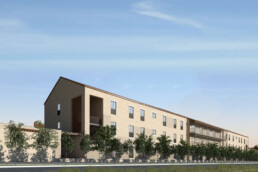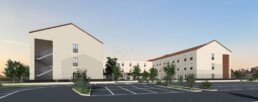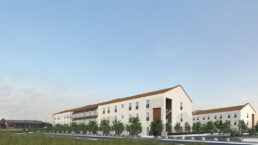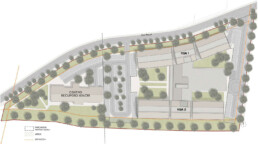Erbusco (BS), Italy
RSA Erbusco
Year: 2021 – Ongoing
Client: Namira S.G.R.
Area: 11.200 sqm
Status: Ongoing
Design: Studio Costa Architecture
CDO: A. Costa
Design Director: V. Didier
Project Leader: A. Vecchiarelli
Project Manager: V. Didier
iDEAS, GA ENGINEERING
Erbusco (BS), Italy
RSA Erbusco
Year: 2021 – Ongoing
Client: Namira S.G.R.
Area: 11.200 sqm
Status: Ongoing
Design: Studio Costa Architecture
CDO: A. Costa
Design Director: V. Didier
Project Leader: A. Vecchiarelli
Project Manager: V. Didier
iDEAS, GA ENGINEERING
The building is located in the heart of Franciacorta, a hilly area situated between Brescia and the southern tip of Lake Iseo, in the city of Erbusco (BS). This area is covered with vineyards and dotted with small villages, medieval towers and castles, palaces and patrician villas, but influenced by the presence of significant industrial installations. The building aims to act as a “buffer zone” between the two different types of landscapes, mitigating the view of the industrial area from the historical area.
The project will host a structure designed for assisted living for the elderly and consists of four structurally independent sections. The northern and southern sections, which have a stronger connection to the landscape, house the A and B sections containing patient rooms and associated ward services. The central sections C and D, on the other hand, contain all the entrances for the public and service personnel and the facility’s service areas.
Distinctive roofing choices have been made for the A and B sections, which are more external and closely related to the surroundings, compared to the central C and D sections with flat roofs that house cogeneration systems, accumulators, and the air handling unit (UTA).
The A and B sections have a pitched roof design, intended to reduce the architectural impact of the structure in the context.
The morphological choice for the building layout is reminiscent of the typical features of Lombard farmsteads, with a quadrangular structure in which a large courtyard is located at the center, along with additional small courtyards. Significant attention has been placed on selecting finishing materials and morpho-typological elements that evoke the color schemes and characteristics of the architectural Genius Loci of the area. This includes using clay tiles for roofing, walls constructed with brick lattice, loggias and balconies made of wooden elements, and the use of various shades of plaster. Additional defining elements of the project will be the molding details on the façade openings. This approach has a dual purpose: on the one hand, it ensures that the buildings are in harmony with the “feel” of the location, and on the other, they become an integral and enriching part of a landscape that is evolving but still maintains its unique characteristics.
The project also pays particular attention to the quality of the green areas: there are planned mitigation zones along the entire lot boundary and the planting of rows of trees and plant species typical of the region.




